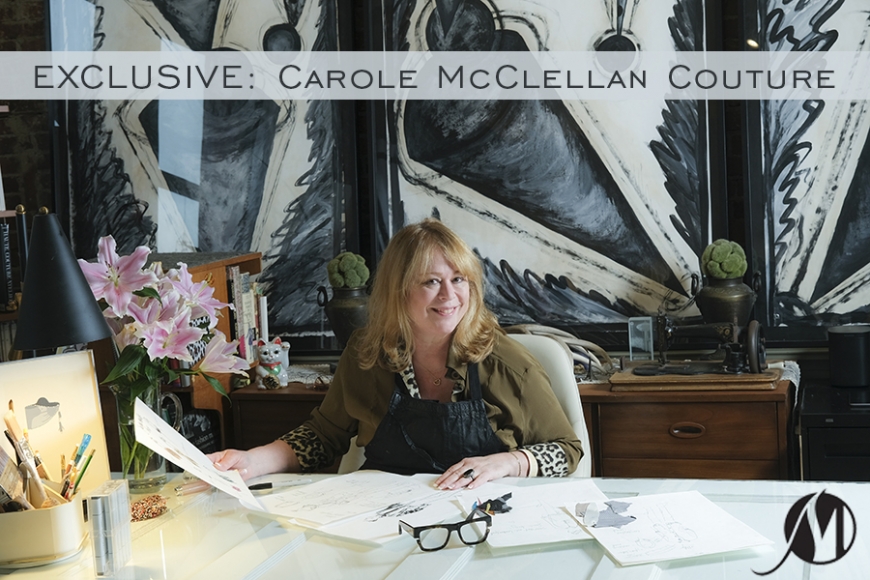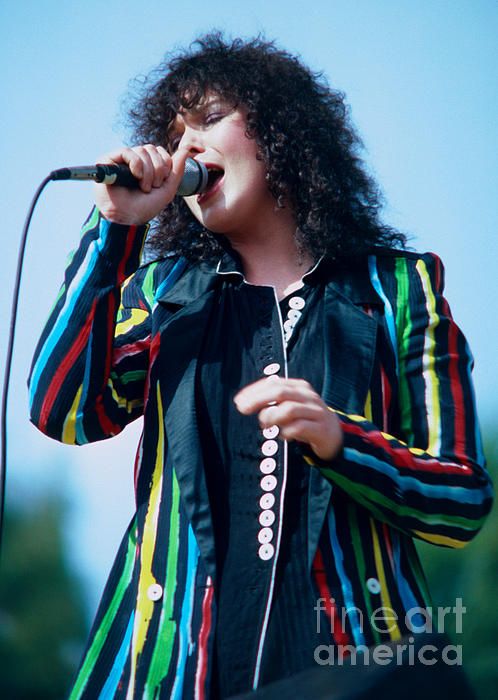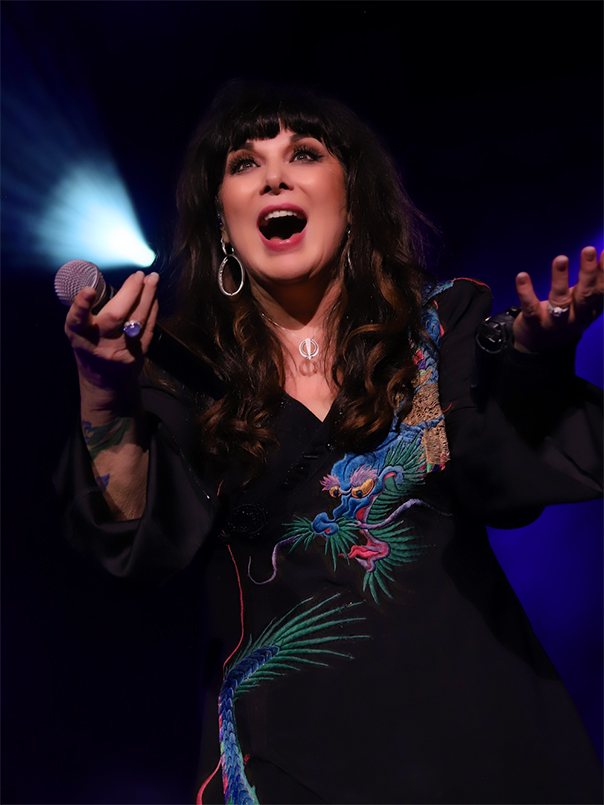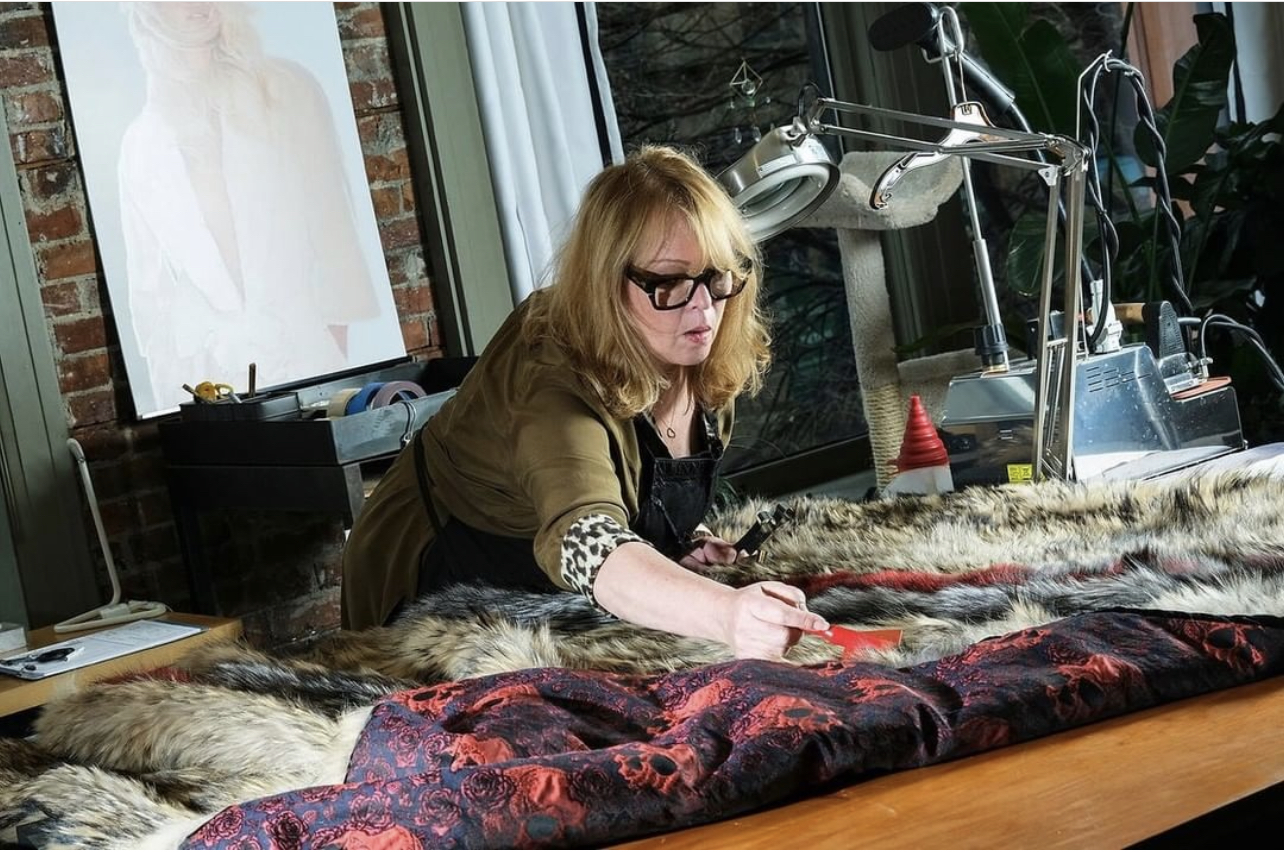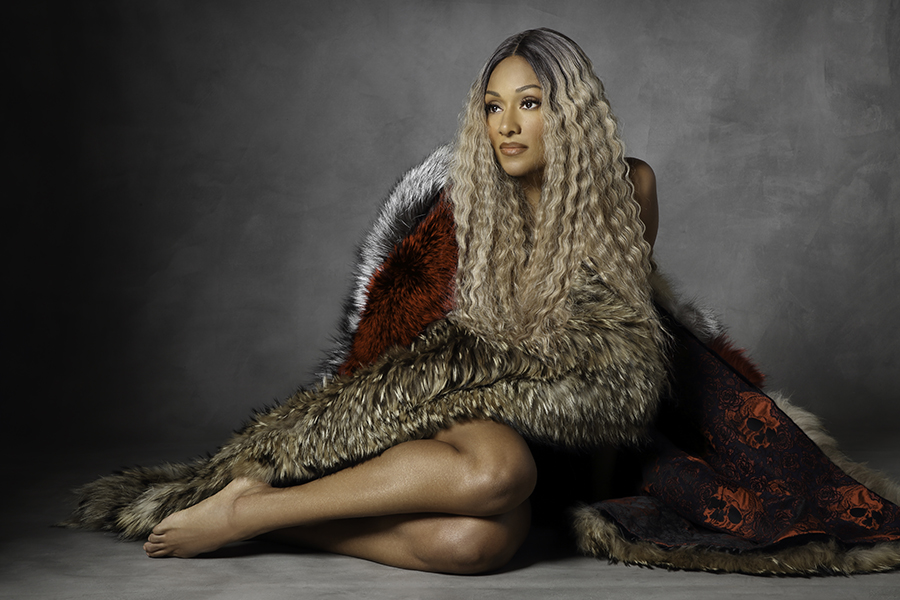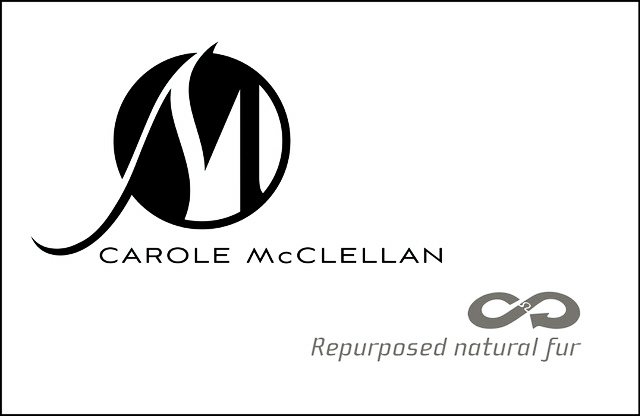I’ve always wanted to sit down with Carole and ask her how she started being a fashion designer and much more. We coordinated the day and time to conduct an interview via Zoom when Carole was traveling to Ketchum Sun Valley, Idaho, to present her new collection in the summer of 2022.
YS: Besides a close circle of friends, colleagues, and clients, most people who know you probably associate your work with the famous stage costumes you created for Ann Wilson. Do you personally feel that, and tell us how your friendship and collaboration with Ann started?
CM: A lot of clients do know that. But the newer set of clients I have don’t really know, and I'll be in a fitting or sales session, and I'll explain to them a situation I was in that reverts back to my rock ‘n’ roll work. And then they go, “What?” And I tell them who I've done clothes for in the rock world. Ann is my major client, I started with her back in 1977, back in the days of yore.
And then I've done clothes for Chris Cornell, Jerry Cantrell, and a lot of other grunge musicians that I could go on and on about, and Hollywood people like Tom Hanks and Toni Collette. The list is long. But how I got started with Ann is really interesting because I was a young designer, and I had just moved from Idaho from a rural farm situation to Seattle, and I was working in the leather industry doing leather clothing, and I worked for a company called the Immediate Family, and they were great, but I wanted to branch out and do some of the really outrageous designs that I was known for.
I was always this kid who dressed really flamboyantly in junior high and high school and made clothes. And so I continued to make really crazy ideas that I had. I went around to a lot of hip Seattle stores, and Seattle was at that time a place like San Francisco, where the short leather jacket, the platform shoes, and the David Bowie glam look were happening. And I'd take things into these stores and try to get them to consign or work for them. But I was still just kind of a little bit too far out there for Seattle, and I had business cards made up, and I gave them my business card, and they'd go, “That's really great stuff. But you know, we have our own things here.” Everyone was cooler than cool in Seattle back then, and I knew as soon as I walked out the door that that card was hitting the bin.
As a young designer in Idaho, I had dreams of being this rock designer!
My whole cues came from album covers, the Creem magazine, Hit Parader...
from music, not fashion!
And so I ended up at a place in the University District called the Wooly Mammoth, and Ann had come down from Canada with the group, and they were at Kaye-Smith Studios recording Little Queen. And she started calling around town to find someone to make her costumes for the Little Queen, specifically a gypsy leather styling. And she called around these places, and they said, “Well, we do know somebody who could make this outrageous stuff, but we don't know how to get a hold of her. But her name is Carole McClellan.”
So it comes full circle, and I think she called around, and that's the one thing about Ann: she just dials it in, knows what she wants, and just does the research. So she ended up calling Wooly Mammoth, and a friend of mine was on the sales floor and said, “I know exactly who could do that for you.” And she goes, “Don't tell me it is Carole McClellan because no one knows where to find her.” I was this young 19-year-old kid, you know? And Ann gave him her private number.
He called me offering the workroom, and he said, “Now listen,” he says, “this rock star Ann Wilson, who has major hits Crazy on You, Magic Man, called and gave her private number” And so he continued, “If you don't call her back, I'm coming over there, and I'm going to put you on the phone.” So I called her back, and we had a great discussion. She told me what she wanted and said, “We're recording tonight. Come on down after you get off work.” My day job was making leather garments, so I went home to Woodinville, got all glammed up, and went back downtown. My aunt and uncle, whom I was leaving with, flipped out: “You going downtown in this dress? Like what?” But I knew it was my chance because, as a young designer in Idaho, this young kid had dreams of being this rock designer, and I never really read Vogue magazine. My whole cues came from album covers, the Creem magazine, Hit Parader, and all that stuff, from music, not fashion.
CM: And back then, the music business really was driving fashion trends, and it still always does. But not as hard in some cases as back then. And because things were still pretty kind of straight and, and launching couture and whatnot. So I went down to the recording studio reception, and they let me in. And they said, “Ann’s working right now. But you know, she wants you in the engineering booth, so you kind of get a vibe of what she is like.” So they sat me down, and she was behind the glass, laying down the voice tracks for Barracuda.
So I watched her record Barracuda, and I was sitting there going, “Wow, this is a catchy tune. I wonder if it will be popular. Wonder if this will hit gold platinum.” So I watched that all happen. Roger Fisher was dancing around the engineering booth doing that Barracuda lick bumping into people. And all these rock stars were asking me, “Wow, you make clothing? We need clothes!”
So then I met Ann to discuss the designs that she had in mind, and she had a sketch of exactly what she wanted. We talked about it and made some changes. And it started from there. So my deal with Ann has always been a co-design collaboration. And it's been very like girlfriends getting together, laughing, having some beverages, and talking about our life situations. That’s how the rock'n'roll thing works. It's an amalgamation of life experience and art. That's how that all started. And it's gone to this day, and I've taken some breaks from doing costuming for Ann, but I've been doing it since 1977 to this day. I just talked to her the other week.
https://suleyera.com/fashion/carole-mcclellan-rock-n-roll-clothing.html#sigProId8042647083
YS: Incredible. You’ve never told me this story.
CM: I'll tell you what we talked with Ann about. last week. This relates to what I'm doing now with my business and brand. So there's this famous poster of her in a chinchilla jacket, and she got that back in Canada at Holt Renfrew back in the day, in the late seventies. And this poster is one of her most sought-after posters. She has a picture of herself at Studio 54 in this jacket with Stevie Nicks. This photograph is really famous. And I'm combining that jacket with one of her other fur coats from back in that day and making a bed throw for her at home. And that's the cognac color in the centerfield and the chinchilla all the way around the edge. And then I'm dyeing the back of it in a silk velvet that is dyed to her signature iris color. I've done a formulation of color for her that matches her stage costume's color.
CM: The famous poster she was photographed with Stevie Nicks in it is widely circulated. And I went through the closet, and I said, Oh, let's take these furs and redo them. So it has milestone memories with it that have great associations. And now it's going to live with her as a throw for the house and home décor so she can curl up and write lyrics.
YS: I know that one of your designs created for Ann Wilson has been on display at the Rock and Roll Hall of Fame museum. What most significant, famous, and iconic items did you create for Ann, and which are your favorites?
CM: So we have a lot of stuff that has ended up in different collections, private collections, and in Hard Rock Cafes, and the Rock and Roll Hall of Fame. The dress displayed in the Rock and Roll Hall of Fame is probably the most iconic. And it's the first one that I designed for her, and it was the Queen suede dress with the front lacing, corseted bodice, bell sleeves, and rough-edged leather. And I did one in an amethyst color with gold trim golden deerskin trim, and then one in emerald green with gold trim. But the purple one is the one that is in the Rock and Roll Hall of Fame.
Famous Little Queen suede dress:
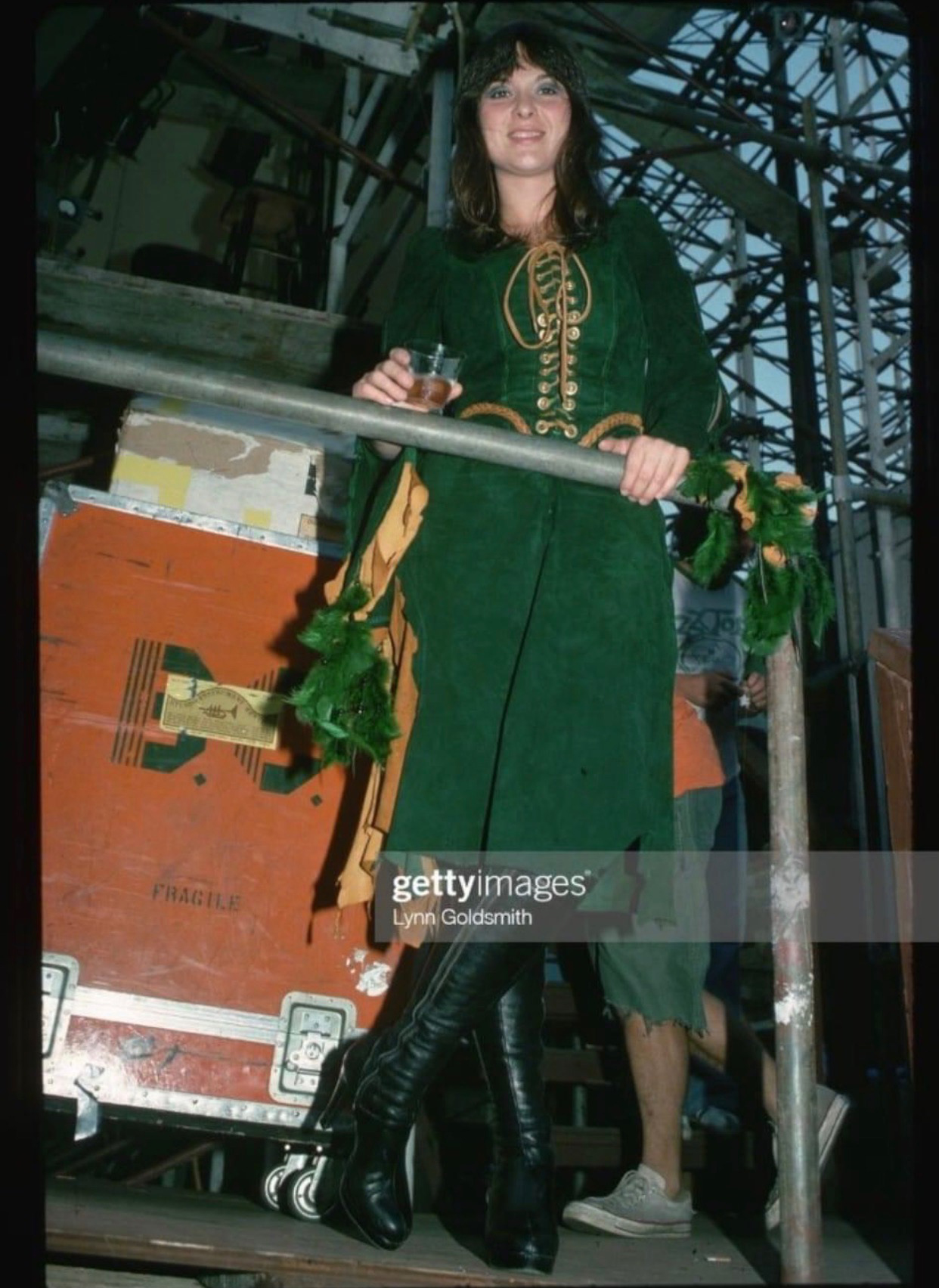
And it delighted me when they put it in there because there was a video where they laid it down and put on white gloves when they handled it, which I respect. They talk about how the nuance of the design relates to the music of that particular period of time. And you know, seeing your work respected and displayed like that as a designer is amazing. They show the stitches, and I remember the exact moment I took that turn with the sewing machine. And now it will live on forever. And it makes me really happy that I created and designed things that people are so happy about, bringing joy and vision to them. And I meet young designers who were inspired by this work, copied these things, and have tribute bands who replicate it.
YS: You created an entire wardrobe for Ann's latest tour, and you were even on the road helping and assisting her during the shows. What were your most exciting, fun, or challenging touring experiences, and how does it feel to be working with such a bright and talented rock star?
CM: In the days of yore, I used to go out with them on tours. So it was a limo, private jet, and the Four Seasons hotels. Now what I do is go out mainly for just a little segment to get situated on rehearsals so that I can see if things are working and doing fittings and to meet the structure of that crew that's going out to help pack the cases a little bit. I talk to them about the maintenance of costumes. And I would say that that's the hardest part right there. There's only one garment in the Love Alive tour that was a really hard one to maintain, and that was her dragon dress. Because of that, the embroidery came off a 20th-century Chinese dragon robe, is antique, and can't be washed.
Now I have gone more eco-friendly with her stuff, and she's got all washable silks. And there's no dry cleaning because I don't really believe in dry cleaning for environmental reasons. And it's hard when you're on the road to find dry cleaners that can take stuff in the morning and get it back in the afternoon because you're really only there for one day, and a lot of mistakes can be made. Everyone knows that with the whole dry cleaning thing and the disasters that happen from that.
So it's mainly instructing the wardrobe person on how to maintain the wardrobe, steam it out, unpack, and hang it. And I'm this total queen bitch about it. I don't make any friends out there. They need to know how to do it. And it's a skill. I have a friend - who works with Kiss, and their costumes are just crazy to maintain and get ready every night for the guys. And it's a very niche skill, and some people are really good at it, and some people are not really good at it. And if they're not, then you have to train them.
https://suleyera.com/fashion/carole-mcclellan-rock-n-roll-clothing.html#sigProId75a819e2a0
CM: I don't do as much leather with Ann for the stage, I do it for her personal use and appearances and stuff like that. But back in the day when we had leather, oh god, that was crazy. We had PAR lamps back in those days instead of LED, and the heat on stage was just crazy. I used to tease Ann all the time: “How the hell do you do that? She says, ``Well, once you're hot, you're hot out there, and I just sweat it like a rocker.”
And that's another thing. When they come off the stage, the salt and perspiration are really damaging to the garment. And in cases of the silk stuff that comes off, it must be rinsed quickly. It can't really go into the wardrobe case - super wet because there are all kinds of damage that happen here.
YS: Tell us, how did you become a fashion designer? Who were your teachers, mentors, and influencers?
CM: I had a really interesting entry into it. Like I said, I wanted to do rock ‘n’ roll clothes. But when my career day happened in school when you have those career days, I was a bit scared, but I was never discouraged. I wanted to be either a professional ski racer, a musician, or a designer. I played drums and keyboards, but I was never that good. And I had a lot of people around me, mainly family members, who said, “Oh man, that's a big dream, and you really should pick something to make a living out of.” I was determined to do it. I had an aunt living in Seattle who told my father that now she would do that.
And so my auntie said, “You just give her a plane ticket and send her up here.” And so that was my graduation present - a one-way ticket to Seattle, and I got off the plane, and she looked at what I had on, and she goes, “We're going to change your clothes a little bit, and I have five job interviews for you this afternoon.” I was interviewed by some custom leather people. One of the sectors I was interested in going into as a designer was ski wear. So I was interviewed by Demetre, who manufactured ski sweaters and Roffe ski wear. And I ended up going with the leather.
When I was younger, I was a big forager, and I won a lot of awards, and one of my jackets that I did for a foraging project, I took to a hippie leather shop in Twin Falls, Idaho. And the owner looked at it and said, “Wow, you made this, you have some talent.” He really saw the potential that I had and offered me an old-world apprenticeship. And so I did a real apprenticeship through junior high and high school, and I did a lot of leather, and at that point, I was doing some consignment work up here in Ketchum Sun Valley, where I'm sitting doing this interview from right now. And so when I moved to Seattle, I decided to take a job that had leather because it has always been the sector that I have a big passion for.
YS: So, did you go to a design school?
CM: I went to design school, and I had a really interesting situation happen with that. I got two quarters through a design school, and I had some really interesting mentors in design school. John Eaton was one of them who had a really interesting background. He lived in the Carnegie Lofts in Manhattan and was part of that early artist community. And then, he went to Hollywood, had experience working in movies, and ended up in Seattle as a teacher after his retirement years. And he was part of that really old-school design mentality, and he was an amazing milliner. So I was trained in millinery and design school, and I went to Seattle Central back in the days when it was more of a dressmaking school. It was geared more toward couture. Now it's geared toward sportswear. I was just right on that cusp where it was changing, and I got two quarters into it, and that's when I met Ann Wilson.
She was funny. Ann’s friend, Tom Petty, was like this with one of his band members. He convinced him to quit school and join the band and go out on the road with them. And that is what Ann did to me. And she told me: “You can either work in the industry now or keep going to a design school.” Technically, I already knew how to make garments and build things. I just need some pattern-making skills I hadn't acquired during my apprenticeship. So I later took private lessons from Terry Horlamus, who had the New York Fashion Academy in Seattle. She's a great teacher and did a lot of couture work. And so I quit school, joined the rock and roll circus, and worked for Ann. So I didn't finish and get my degree, but along the way, I've had some amazing mentors and met people in the business I had just flat out offered them money to mentor me, and I’d asked them how much if I could pick up the phone and call you any time for the next six months? How much would you charge me? And I've had mentors everywhere, like in Europe, States, East Coast, West Coast, and then mainly practice, practice, practice, practice.
I'm not scared to buy a piece of fabric that's 10 dollars a yard or 1500 dollars a yard and hack into it or not hack it. I put a lot of money into my brand and my career in development and just practicing, practicing, practicing. I never, ever waited tables. I never, ever allowed myself to go out of my sector. I would keep going. And then I would hit a mother lode of someone needing some things, and I would do some work, and then I'd take that money and put it back into my business and keep going, and I am 65 already, and this is what I do, and I'm still going.
In the fashion business, you're an artist, you don't have the choice to not create. That's my life. And I will be like Coco Chanel, and I will create until I drop. She died on a Sunday when she was off. And Karl Lagerfeld, look at how he ran the mile. And I am from that mentality growing up on a farm when you just keep working.
YS: Have you always stayed in Seattle? Have you ever considered relocating permanently to LA, New York, or European fashion industry centers? What holds you in Seattle? What makes this city so special for your lifestyle and inspiration?
CM: In the late seventies and eighties, Seattle was really interesting because the tech was just coming up, and Seattle was blooming in a really exciting way, and that Boeing was no longer the major thing. And I had done things for Ann for almost five and a half years from about 1977 onward. And then, I started meeting a lot of fashion clients through my work at Butch Blum. Kate Blum put her wing around me and said, “You should do a collection, you should start your own brand, and this is how it's done.” And Marianne Francis, who became my first sales rep, said, “Let's go to New York and show this little capsule collection.” I started going there and showing during Fashion Week and considered going to New York. But it was so expensive and so intimidating. And I was a young designer and was doing fine in Seattle, and I had a great loft in the Terminal Sales Building. And when you have a 4000 square foot loft with huge 25-foot ceilings, a freight elevator coming into it, French windows on the front, and it was right across from the Moore theater on Second and Virginia, and you're paying $250 a month. Why move? You can get on an airplane. This is part of my career. I realized you can always get on the airplane and go out.
https://suleyera.com/fashion/carole-mcclellan-rock-n-roll-clothing.html#sigProIda50861df94
But I always centered myself where I could financially do it and not stress myself out and cause a failure by leaping too far. And I really like Seattle. And then came the nineties. And who could beat Seattle in the nineties? Seattle in the golden years of grunge was great, and then meeting all musicians who became clients - Chris Cornell, Jerry Cantrell, and on and on and on. Then we came up into the 2000s. And things are working well, we’ve got the tech. I can do business from anywhere, I can work, communicate, and get on a plane. I go to shows in Paris. I did a collection showing in Paris in 2003.
That's when I started to toy with moving to Paris because I met many people who said, “What the hell are you doing staying in Seattle?” And then you come upon that situation where you go, “Well, I could move internationally, but you realize unless you have a work permit and you have the passport to be where you want to move, you don't start messing with that stuff just because you're a US citizen and you think you can live anywhere. I tried it in Canada in the latter eighties when I was working on a project, and I was removed by Canada - manpower, and immigration because I didn't have a work permit. So you learn that there are some logistics you have to follow.
I always had been downtown Seattle and I've lived a real urban life for decades, but I don't want to go heavily into that. I was not really happy with this City Council politics happening there. I don't think it is built-friendly for small businesses, but I think also, personally, I reached that point where I needed a change.
And so I've stayed in Seattle for a long time, but now I have moved to Sun Valley, Idaho where now I can walk out the door, have some pigmy goats and horses, and garden again.
YS: What motivated you to start working on clothing restoration and preservation, especially working with natural furs and leathers?
CM: I had a publicist in the latter nineties, and her friend inherited seven fur coats from her mother-in-law, a.k.a. the outlaw. She had to wear them, but they weren't her style. And my publicist asked me if I could take a look at the furs and change them around. I had been trained in fur in a design school. Mr. Anderson, who taught at Seattle Central, taught me the basics when they had a fur program there.
And then, in my travels, when I worked in Canada in the latter eighties, I spent a lot of time in Toronto and Montreal, so I picked up the fur trade and started messing with it again. And so I redid some of my publicist friend’s fur coats. And she went out wearing these fur coats, and people were like,” Wow, you can have my fur coats recycled and restyled,” and my business flipped almost overnight.
If you take care of a fur coat right then you have fur coats for 50 or 60 years.
So it's very sustainable, and it's much better than faux fur that's plastic.
If you want to wear faux fur, it's fine. You just make your choices. It is about choices. It's a free country.
And then, I started really thinking about the sustainability of recycling fur and how the fur industry had been cornered with the fur activist situation, which still happens. I still get hate mail. I got a nice little hate letter coming into Sun Valley. And so I just put myself in a situation where I realize a lot of furs are already out there. A lot of people have furs that have been handed down, or they're cruising for an eBay or that thrift store. Why throw the baby out with the bathwater? Let's take these furs and let's bring them up so that they look like contemporary clothing items that would come down a runway today. I'm positioning myself in the chain to restyle. So you can go out and have a chicken dinner, right? It's going to last for 24 hours or however long it keeps your energy going. A fur-like mink has a total of “nose to tail “purposes. And so this is how it works. We have the carcass that becomes pet food. Certain things come from lubricants, cosmetics, eyelash extensions, and paintbrushes. It's a nose-to-tail thing. It's no different than the beef industry or poultry fish. When you see a fish farm, or a trout farm, oftentimes you will see a mink farm next to it because offal from the fish is converted into food that the mink eats. It gets really high in oil content, making its fur luxurious.
So I position myself in that industry down the chain so that I can keep that product going. And if you take care of a fur coat right then you have fur coats for 50 or 60 years. It's not going to last that long, so it's very sustainable, and it's much better than faux fur that's plastic. It gets ratty after like two years, right? There are things you can do to fluff them up, but you cannot regenerate a faux fur coat like you can a real fur coat, and also for the operators working on faux fur. And I learned this the hard way.
Those little polyester sharts and breathing them into your lungs messes your lungs up. I had a severe asthma attack from working on faux fur, so I backed up to natural fur so it doesn't affect me that way. Faux fur doesn't decompose like natural fur. I’ve thrown faux fur in compost piles in my gardens when I've had gardens, and I've looked at it, and shockingly, it doesn't. It's not eco-friendly at all. And people who think that they're so sustainable and vegan. All it is about is providing support for the petroleum industry. Faux fur is made out of petroleum. And also, they don't think about the fact that I'm wearing a piece of plastic that was made of what? Petroleum.
I have people that come up to me and ask me about that. You can give me 15 minutes of going at me for being a furrier, but then I want you to just listen to my side of the story here. And I've had people break down in tears. They go, “Oh my God, I had no idea.” You know, it's all cool. You just make your choices. It is about choices. I get so tired of this anti-fur thing, they want to railroad me and try to disgrace me and try to mess up my livelihood. They are not throwing paint anymore. They're buying politicians to pass laws to make it difficult, which is crazy. And there should just be choices. If you want to wear faux fur, it's fine. You bring your faux fur into my shop, and I'll put a hook on it. I won't do a remodel on faux fur because I can't work on it because of asthma, but I can refer you. I don't hate them, right? It's about choices. It's a free country.
YS: In your opinion, what should fashion designers, influencers, retailers, and the entire industry do to make eco-friendly, sustainable clothing and accessory manufacturing a mainstream and prevailing practice?
CM: I'm using circular manufacturing. We should look at all that scrap stuff that's ending up on the floor. I think that one that bothers me the most about some of my fabric work and the original design is the marker and how much waste there is when cutting an original prototype. So I think that figuring out what you can do with the scraps - I have a silk mask business that I need to get back on and get back up online. I have a beautiful design, pattern, and website for it, but it's all about fulfillment and getting people to manufacture it.
For instance, I saw the Gucci tennis shoes - all the islets were made of recycled metal. The whole shoe was out of stuff harvested from things that were no longer being used and recycled. And it looks like a brand-new spanking product. It was amazing. The problem with it is it takes ingenuity, patience, and money to retool and figure that out. It makes the product more expensive.
But I'm fine paying more and having less. I think that that's one thing about the American market, they tend to go for fast fashion, whereas the Europeans - you'll see a core wardrobe, and you'll have only so many pieces and a mix and match in that. Europeans take great pride in buying a really good product.
But some major companies of fast fashion ship stuff out, and it doesn’t fit because the sizing chart does not reflect the grading on the garment. And the customer sends it back. And instead of repackaging it, they just burn it or landfill it. All of that has to quit. And I think we in the fashion business need to look at it. We are at a crossroads with global warming and waste. We have to get smart about this. We are messing it up for future generations.
YS: While creating your new line of ready-to-wear designs, you worked with Marc Von Borstel - an incredibly talented photographer who made an entire production of those new looks, including hair and makeup. Tell us more about that session, about models, and if you had any production challenges.
CM: Marc is one of the most amazing photographers I've ever worked with. I've done different sessions with photographers that have been really great. You are going into a session with Marc, and it's very specific. He started out in hair and makeup. He's very dedicated and very precise.
And you have to give it up to him, and that's the hardest part as a designer. When he works, it is a quiet set. He's the only person on set with this model. You deliver clothing to him. And you have a lot of pre-discussion about it, but he is the art director. He does the hair. He does the makeup. He does lighting. He does like the backdrop. And he does photography.
-
 Repurposed Finn Raccoon Blanket
Repurposed Finn Raccoon Blanket
Repurposed Finn Raccoon Blanket
Repurposed Finn Raccoon Blanket
-
 Blue Fox Fling Stole
Blue Fox Fling Stole
Blue Fox Fling Stole
Blue Fox Fling Stole
-
 Dark Mink Classic Topper Swing Coat
Dark Mink Classic Topper Swing Coat
Dark Mink Classic Topper Swing Coat
Dark Mink Classic Topper Swing Coat
-
 Frayed Edge Denim & Fur Jacket
Frayed Edge Denim & Fur Jacket
Frayed Edge Denim & Fur Jacket
Frayed Edge Denim & Fur Jacket
-
 Repurposed Fur Ear Muffs
Repurposed Fur Ear Muffs
Repurposed Fur Ear Muffs
Repurposed Fur Ear Muffs
-
 Feminine Levis Vintage Trucker Jacket
Feminine Levis Vintage Trucker Jacket
Feminine Levis Vintage Trucker Jacket
Feminine Levis Vintage Trucker Jacket
-
 SAGA Silver Fox Parka
SAGA Silver Fox Parka
SAGA Silver Fox Parka
SAGA Silver Fox Parka
-
 Leopard Leather Skirt & Black Saga Mink Shawl
Leopard Leather Skirt & Black Saga Mink Shawl
Leopard Leather Skirt & Black Saga Mink Shawl
Leopard Leather Skirt & Black Saga Mink Shawl
-
 Rugged Cuban Blanket Coat
Rugged Cuban Blanket Coat
Rugged Cuban Blanket Coat
Rugged Cuban Blanket Coat
-
 Cozy Wrap Coat
Cozy Wrap Coat
Cozy Wrap Coat
Cozy Wrap Coat
-
 Sherpa Vest
Sherpa Vest
Sherpa Vest
Sherpa Vest
https://suleyera.com/fashion/carole-mcclellan-rock-n-roll-clothing.html#sigProIdbff160a5f5
A new collection by Carole McClellan can be purchased at https://carolemcclellan.com/
You have to really trust him. He does work for top magazines with high editorial quality photos. When you get your photos, they're breathtaking. You don't get your assets handed back to you at the end of the day for you to go over. You don't see your dailies. And so it's a big trust that I've worked with him, and he, by far, gives me exactly what I need. The one thing I like about Marc is that he knows old-school fashion, drama, and lighting. But what I like about him is his editorial. And so if he wants to put a cigarette in a shot to create some drama, so be it.
YS: Would this new clothing line become a production collection or only be available as custom-made? How can people contact you, purchase your garments and become your long-term clients?
CM: Right now, it is about made to measure. I have styling suggestions that are on the website, and you can order those from the website, but it's made to measure. Or you can have your fur restyled into those pieces. I've got a vintage section where I'm photographing all the restored vintage pieces that I curate so people can go on the new website.
So most of my stuff is made to measure. Still, because production is a huge problem in my sector and I have people that approach me for production, I just can't. It's not quite the quality that I want to put out. That's where the trust is. I can give it up to Mark to photograph stuff, but I've never found anyone who can produce what I need to have produced in small quantities. So I run it out of my shop where every piece has hands-on, and I have a great assistant, Mandie Anderson, who works with me and understands exactly what we're doing. And I think that it's better to keep it small and controlled, then go into production. I'd love to go into production. It takes a big bank account to do that investment. I've chosen to stay very small, and I think that less is more.
And also, there are many of them and only one of me. And I think my clients really appreciate that. When someone turns a 45,000-dollar Fendi coat over to me, they want to know it's handled correctly and that they can trust that with good hands. So I think that most of my production stuff is going to be small pieces and accessories that I'm going to put out.
Caroles’ contact info and social media:
Website: https://carolemcclellan.com/
You may contact Carole McClellan Couture by telephone at 206-956-8484 between the hours of 11 am and 6 pm Pacific Standard Time, Monday through Friday.
Please text with a callback number and the nature of your inquiry if we cannot answer the phone at the time.
Instagram: https://www.instagram.com/carolemcclellan/
Facebook: https://www.facebook.com/Carole-McClellan-Furs-and-Leathers-129881523748204


